Andrew Wagner with Ulrike Ottinger
Kunsthalle Baden-Baden
by Andrew Wagner
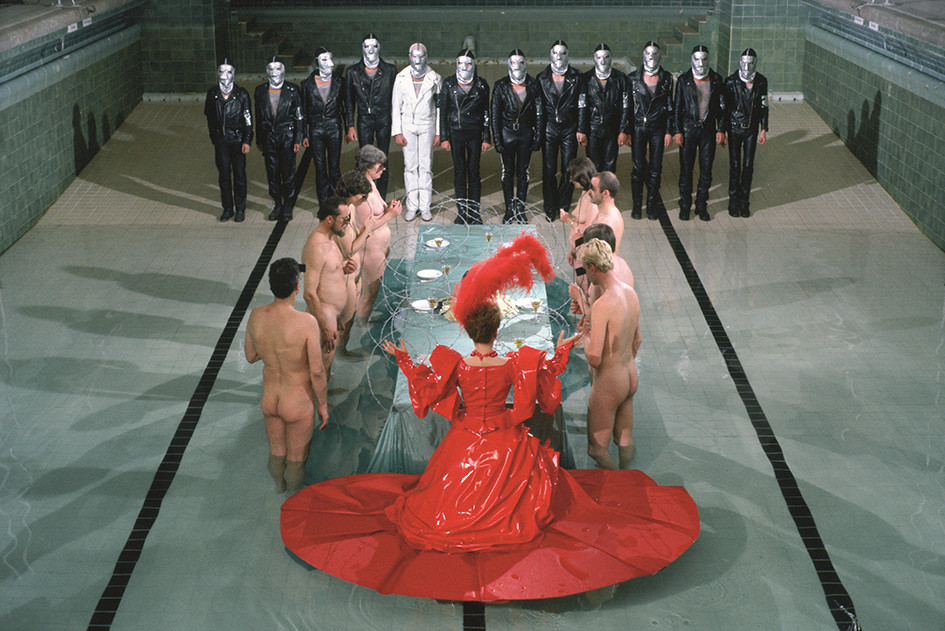
Ulrike Ottinger, Das Gastmahl der verfolgten Wissenschaftler und Künstler, 1981. Photography. © Ulrike Ottinger.
In a career spanning over fifty years, Ulrike Ottinger has charted a singular path as an artist. She is best known for her cinematic work, especially her fictional films like Ticket of No Return (1979) or Freak Orlando (1981), which boast a distinctive blend of surrealist tableaus, social critique, and visual panache. She has also created numerous meditative documentaries and film essays, often examining how everyday life becomes bisected by social and historical forces. Alongside her moving-image practice, Ottinger has explored her conceptual interests through work in a diverse set of media, which has included painting, printmaking, and sculpture. This past spring, the Kunsthalle Baden-Baden mounted Cosmos Ottinger, a quasi-retrospective that emphasized the thematic throughlines that unite Ottinger’s myriad forms of artmaking. On the exhibition’s closing day in June, I travelled by train to Baden-Baden to speak with Ottinger about the exhibition, her path to filmmaking, and the potentials and limits of streaming services.
Andrew Wagner: How did you first arrive at Cosmos Ottinger, the title of your show? Have you always thought of your work as a cosmology?
Ulrike Ottinger: No, not always. But when I saw the architecture and the rooms here, I thought it would be very interesting to create a kind of stationary dramaturgy of the rooms. I wanted to think about what was really important to me in the last sixty years. I always went back to certain themes. I thought that it would be interesting to bring all the things you have in your mind—not only in your mind but also as real objects, as films and photographs—and to combine them with new elements. So it’s a kind of a procession. You go from one room to the next, and at the end it forms a kind of circle.
AW: I experienced the exhibition as a kind of film that you move through. I was curious about this, because you don’t show too much of your actual films in the show, its more —
UO: There was a program at the cinema, so each Sunday there was a film of mine. In my work, I’m always including the past—not my past, but the past in general. There is always a reflection about what was new in the past and old in the present. I like to work a little bit with this, and to especially find out in images, which kind of old things are still camouflaged there, and you don’t see them because you don’t look precisely at them. But if you know the history, you discover what is there.
AW: And do you think exhibiting the films in this way—primarily showing the costumes, the stills—do you think this allows viewers to better understand the complexity of your images and all the different references contained within them? For instance, when I first saw Freak Orlando, I didn’t catch all of the Goya references. So it was nice to see the film stills here and digest that a bit more.
UO: I’m interested in certain themes. When you work in different media, you have different approaches to the themes. This is something I very much like to do. Not only to make films, but ... my films’ costumes have a meaning, and the locations have a meaning. It’s not like a normal movie where all of these items are just there. In my films, it’s more like baroque painting, where everything has a meaning. It’s all telling something.
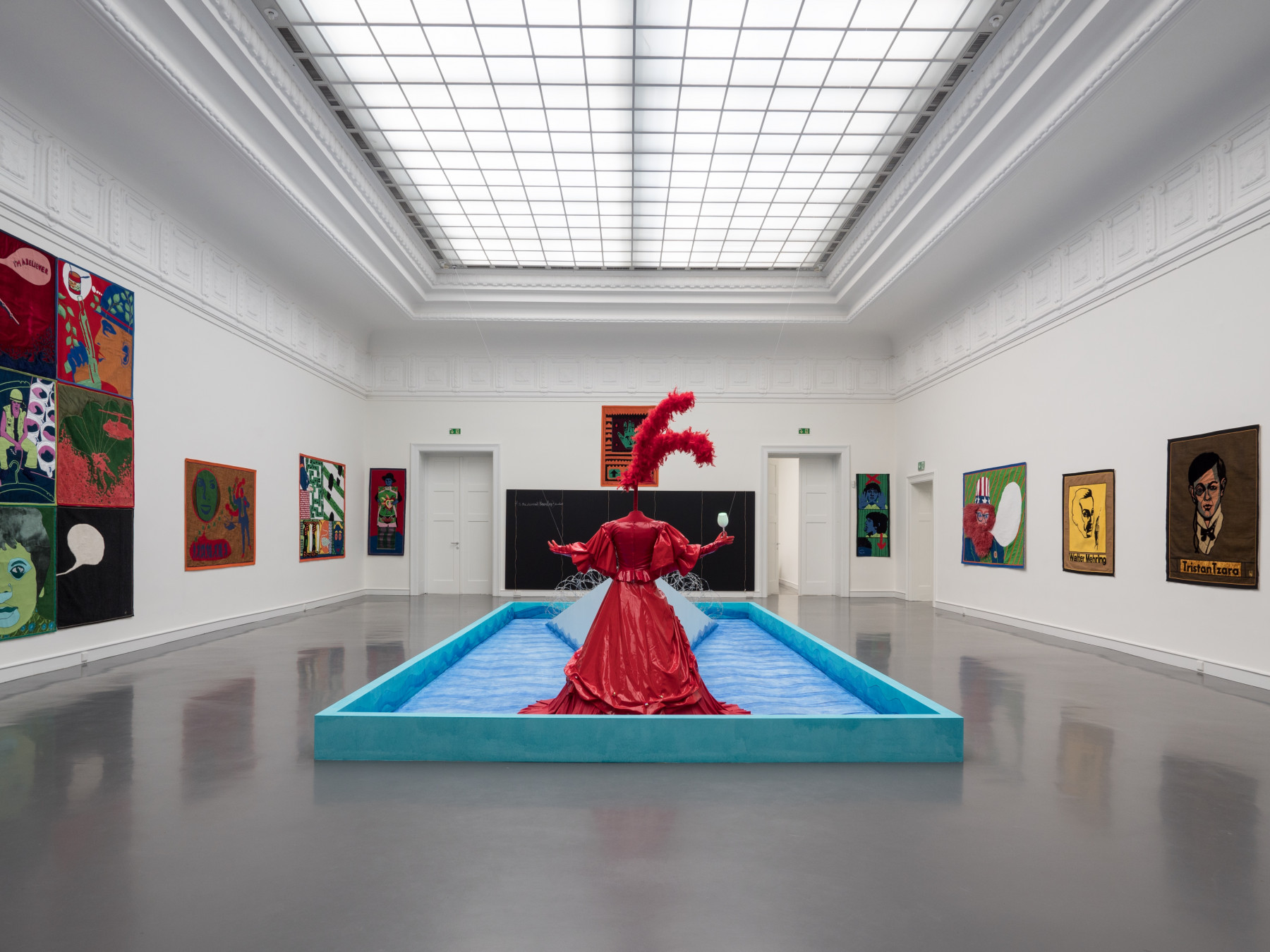
Ulrike Ottinger, Cosmos Ottinger, Installation view. Staatliche Kunsthalle Baden-Baden, 2022. © Eunice Maurice, Staatliche Kunsthalle Baden-Baden.
AW: Could you talk more about your approach to location and how it developed? It seems like a very distinctive part of your filmography.
UO: When I’m in a new place, and also in places I already know, I always like to walk around and to look. Sometimes I find locations and places that tell me a whole story. And these are the places where I like to do mise-en-scène. It’s especially present in the so-called Berlin trilogy—the three films Ticket of No Return, Freak Orlando, and Dorian Grey in the Mirror of the Yellow Press. These three films are all shot in Berlin, and for each one I found very specific locations, and I have done mise-en-scène in these places. At that time, Berlin was completely different, because the wall was around. And then you had old manufactories and these kinds of things, and you could make a studio out of them. This is also what I have done. So I found Berlin to be an ideal place to make films, because the German history was still visible in the houses. When I went to Berlin for the first time in ’73, it was amazing. You had the ruins, and there were little coffee houses or biergartens in the middle of the ruins. You still had the remnants from the fires on the walls. And it was grey. It was completely grey. It was not like today, it was another city. And it was not glamorous at all. I found it interesting.
AW: In your process, do the locations sometimes suggest the narratives to you?
UO: Also, both. It goes in both ways.
AW: One more location question I was curious about, because Baden-Baden is so close to your hometown, Konstanz, right? And so—
UO: But Baden-Baden is something very special. You know, Baden-Baden is Baden-Baden. It was this old city for the high society, from the tsar to all the nobles. It used to be a high society place. And it’s still present. For me, Baden-Baden is like a museum. I think it’s really funny. It’s beautiful of course, but I wouldn’t like to live here.
AW: It’s my first time here, but I can see that.
UO: You have to walk around. It’s unbelievable here.
AW: I got a glimpse of it. Tomorrow I will definitely go to the baths.
UO: You have to go to the Friedrich bath.
AW: That’s what I thought.
UO: Everything that you have to do is written in mosaics. “You have to stay here for ten minutes,” in the mosaics. And you go in, and you are not allowed to take anything with you, and then they bring you big—not towels, but these big, big linen things. You have to do the whole program. It is fantastic. It’s another world.
AW: So do you feel this region—either Baden-Baden, or even your hometown—influenced your practice or the exhibition at all?
UO: Baden-Baden is very special. But I especially like the kunsthalle. The kunsthalle had a very important history in German art. If you go and you look at the exhibitions, from the turn of the century until now, it’s unbelievable. It’s like a mirror of the important movements during that time. Immediately after the war—45, 46, 47—the French were here in this region, the southern part of Germany. A little bit up north and in Bavaria is where the Americans were. And then up north, Hamburg, there were the British. And they each had their cultural officials. So at that time there were French exhibits here. So you have really a mirror of time of German art history. And there was a lot of influence from Paris, of course. at that time. And before then, in the twenties, you had fantastic exhibits—also after the war in the fifties.
AW: Were you exposed to a lot of these cultural influences growing up here?
UO: No. I left Konstanz very early. I went to Paris, and spent a long time in France. And then I came back afterwards. After a while, I went to Berlin.
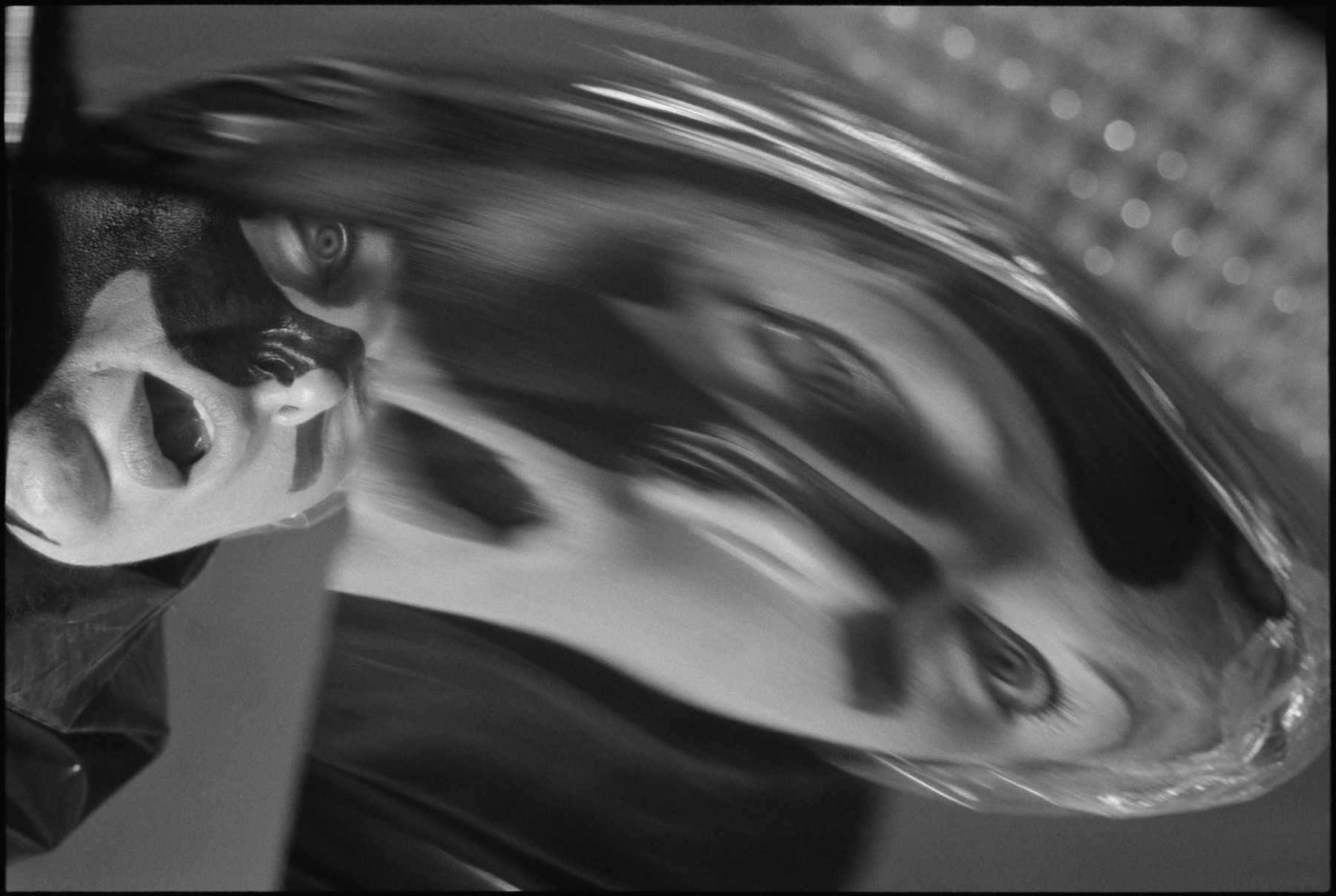
Ulrike Ottinger, Verzerrungsstudie, 1980. Photography. © Ulrike Ottinger
AW: At the start of your film Paris Calligrammes, you have a statement about just arriving in Paris: “In my euphoria, I wanted to make art out of my direct experiences.” That’s the English translation, anyway. Has this idea of direct translation of experience continued to be an artistic motivation for you?
UO: Sure. Of course it then becomes combined with other things. It’s like a mosaic, where the old and the new and your ideas all come together—and form a body, an artistic body.
AW: What in the end led you from painting to filmmaking?
UO: When I grew up in Konstanz, after the war, you couldn’t see interesting films in Germany. I remember as a child I saw some films, some interesting French films. But normally you couldn’t see interesting films in Germany. There were some exceptions but... the whole culture was gone. It was destroyed. It was a great culture before World War Two of course, but then it was gone. And the people who were responsible for the interesting things were no longer in Germany. This is why I wanted to leave Germany. It was not an option for me to stay in Germany at that time.
And then when I was in Paris, I saw all these fantastic films—you saw just everything! They had all these colonies, so all the artists and filmmakers from these countries were coming to Paris. From Mahgreb, for instance. There were of course all the American films, but also all the independent films. From Indonesia, from the States—everywhere. This was fascinating. So I became more and more fascinated with film. And finally, I started to wonder whether I couldn’t do this by myself. It took a while. But it was highly inspiring for me.
AW: Your film’s narratives frequently involve characters or individuals who are in some way marginalized. Gender and sexuality of course are very present, but also in your later films questions of nation and race seem very important for you. I would even say that your films explore “outsiders”, or people on the periphery, in general. Do you see this focus as a political act? Or is it coming from another place?
UO: I’m just interested in it. I think in art, the extreme and the other are always more interesting to deal with and to work with. In the past, if you look at Goya, for instance, he had very interesting models he worked with. I think that people who have faced a lot of difficulties in life have more fantasy, because they have to find ways to make their life interesting. I made the film Under Snow, about people who live underneath snow for six months. It’s interesting to see what techniques they developed to do this. There’s a lot of playfulness, and also happiness among them. And they are not outsiders. They just live in a unique area.
I’m just curious...to see how people get along. And I also like to play with roles. When you work in different cultures, you understand that all the norms are formed by society. Or else by the people you are surrounded by, the class you belong to. And I like to play with these expectations and turn them around.
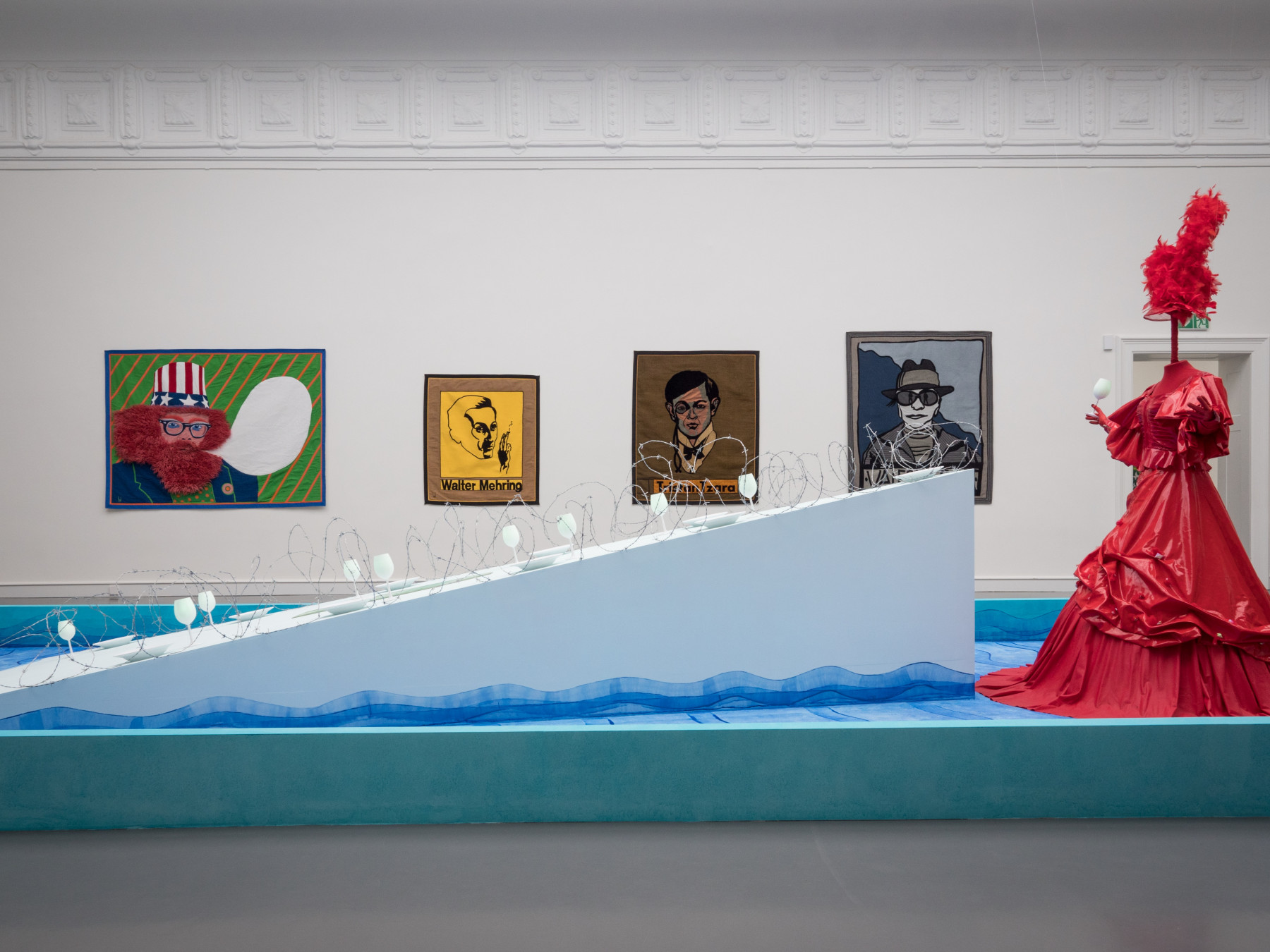
Ulrike Ottinger, Cosmos Ottinger, Installation view. Staatliche Kunsthalle Baden-Baden, 2022. © Eunice Maurice, Staatliche Kunsthalle Baden-Baden.
AW: On the one hand, there’s so much about your films that makes them very enjoyable, and almost entertaining—the costumes, the tableaus, the humour. But there are also aspects of your filmmaking that seem to go against what we usually expect of films. The narrative pacing is often slower than in conventional cinema. To what extent are you thinking about playing with viewers’ expectations of cinema and how viewers have been trained to watch cinema? Are you trying to subvert these expectations?
UO: I don’t know how to answer this. I’m just following my interests. There’s a lot of irony in my films, of course. Madame X is a pirate movie, but it also talks about something else. It’s a comedy about the women’s movement and about the subsequent changes in personalities: that some things have to die so that other things can be formed afterwards. At the same time I’m working with what you would call—in an ethnological or anthropological way—initiation. These rituals always go through death. But in a pirate movie, of course, some people are killed. So I’m simultaneously working with different models.
AW: I actually just watched Madame X this past week, and I was struck by how you recognise all these Hollywood tropes in it.
UO: Of course, they’re wonderful. I’m working with a lot of those things.
AW: Your films have become available to watch on the Criterion Channel. What do you make of streaming your films?
UO: You are too young, but for a long time—since I would say ‘77—my films were in the states, at all the universities. The films were always in cinemas, both in the old cinemas and in the new ones like Metrograph in New York. MOMA of course is showing my films—but also other cinemas. There’s always been retrospectives.
Sometime ago I was sitting in a train, and there was a young woman, probably a student, who had my film Ticket of No Return on her iPhone. And she was watching it, and I looked. And after five minutes she stopped. It was too much. But then she went back! For a long time I haven’t done any of this, not even in the beginning of DVD. I refused to do it. Finally I’ve done it. For me, cinema is a real thing. And the other—this is like the catalogue of an artwork. If you’re well equipped, it is possible. But if you’re not well equipped...
AW: It seems like among young people, there is a renewed interest in your films.
UO: Sure. There’s always a new generation.
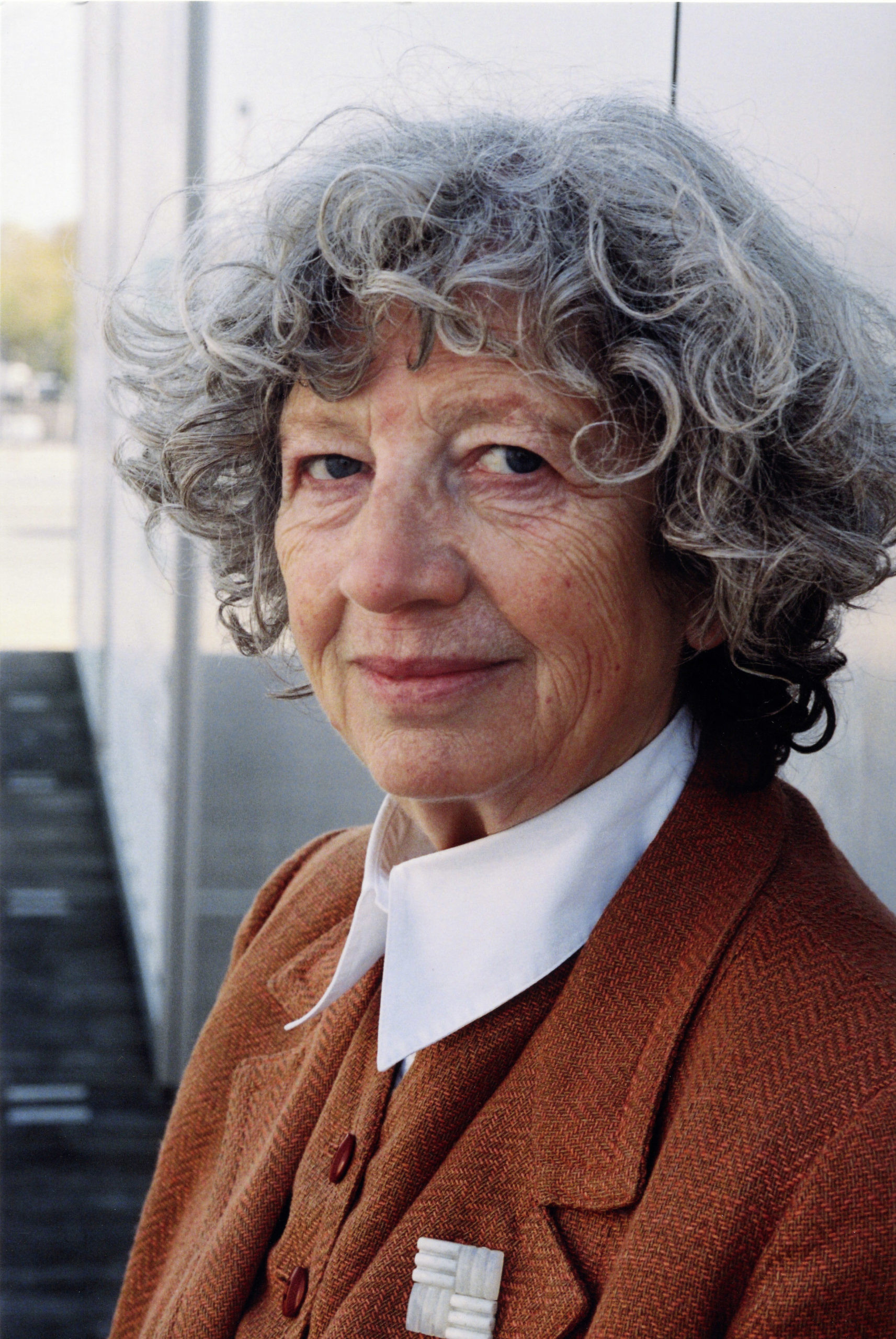
Portrait Ulrike Ottinger. © Ulrike Ottinger
Cosmos Ottinger
Ulrike Ottinger
19/02 - 15/05/22
Staatliche Kunsthalle Baden-Baden
Lichtentaler Allee 8A
76530 Baden-Baden